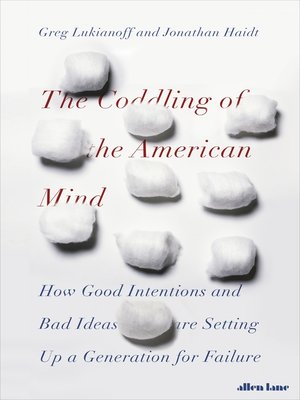

Some students and faculty have engaged in intimidation, threats, and witch hunts in efforts to remove all ideas deemed offensive. Part 2 reviews the recent history of campus protests and confrontations that have shaken American higher education. The third Untruth, us-versus-them, generates “common-enemy identity politics” (63) and tribal hostilities that turn disagreements into open conflicts. The second Untruth, that strong emotions are accurate judges of people and things, causes distrust and angry confrontations where simple discussions would do. The first, that children are fragile, collapses when parents see that kids are, in fact, “antifragile,” able to experiment and take risks so that they can learn how to cope with society and the world. Part 1 explores in detail each of the Great Untruths.

Trainees learn that many situations that appear dire turn out to be manageable when considered calmly. One way to accelerate this process is through cognitive behavioral therapy (CBT), which trains patients and interested others to methodically question the distorted automatic thinking that often accompanies stressful situations, and to replace extreme thoughts with more reasonable ones. Haidt and Lukianoff suggest that parents and schools should instead teach their children to practice a greater openness to ideas. These campaigns fight against any words or beliefs that give offense on the grounds that painful ideas are threats against personal safety. This also helps to explain why so many college campuses have been beset by demonstrations against controversial speakers, attempts to micro-manage community speech, and the growth of a “call-out culture” that shames people who try to speak their minds. This may explain why today’s students display historically high levels of mental illness, self-harm, and suicide.

Haidt, a social psychologist, and Lukianoff, a free-speech campaigner, believe that modern children have been inoculated with three Great Untruths: “What doesn’t kill you makes you weaker,” “Always trust your feelings,” and “Life is a battle between good people and evil people.” These three ideas are based on cognitive distortions-overgeneralizing, emotional reasoning, black-and-white thinking, and others-that are common among people who suffer from depression and anxiety.


 0 kommentar(er)
0 kommentar(er)
